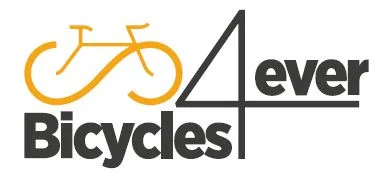Cervélo Answer S5 Aero Controversy & Insta360 GO Ultra Launch | NERO Show Ep. 140 | Chris Miller Cycling
Video Cervélo Answer S5 Aero Controversy & Insta360 GO Ultra Launch | NERO Show Ep. 140 with Chris Miller Cycling
Video Cervélo Answer S5 Aero Controversy & Insta360 GO Ultra Launch | NERO Show Ep. 140 with Chris Miller Cycling YouTube Channel.
Cervélo Answer S5 Aero Controversy & Insta360 GO Ultra Launch | NERO Show Ep. 140
Chris Miller Cycling
Understanding Aerobikes: A Deep Dive
When it comes to cycling, the conversation often shifts towards technology, performance, and the gear that enhances a rider’s efficiency and speed. Aerobikes, designed with aerodynamics in mind, have gained momentum in the cycling community, especially among competitive cyclists. This article will delve into the world of aerobikes, shedding light on key considerations such as aerodynamic testing, the implications of recent findings with the Sevel S5, and whether investing in an aerobike truly makes a difference for different types of riders.
The Importance of Aerodynamics in Cycling
Aerodynamics plays a crucial role in cycling efficiency, particularly for those who compete. A bike’s design can significantly affect how air flows around it and, subsequently, how much energy a cyclist expends. With advancements in cycling technology, manufacturers such as Sevel have focused on optimizing bike shapes to enhance speed. The Sevel S5 is a prime example of this technology, which promises better aerodynamic performance. However, this assertion needs thorough investigation, especially when contrasting results emerge from various testing bodies.
Dispelling Myths: The Sevel S5 Testing Controversy
When Sevel introduced the S5 model, they claimed it offered superior aerodynamic benefits compared to competitors. These claims were put under scrutiny following a test by Tour Magazine, which suggested that the S5 was actually slower than its predecessor. Sevel’s engineers defended their testing protocols, citing atmospheric conditions and differences in testing methods. While Sevel maintained that the S5 showcased a six-watt advantage, Tour Magazine claimed a two-watt disadvantage—an inconsistency that raises important questions about the reliability of aerodynamic testing in the industry.
Are Aerobikes Worth the Investment?
Investing in an aerobike often boils down to the type of cycling experience a rider seeks. For those who plan to race or compete, the aerodynamic advantages could translate into more significant time savings, particularly in situations where every watt counts. However, for recreational cyclists who often draft behind others, the benefits might be less pronounced. A lightweight bike that offers comfort may outweigh the marginal gains from an aerobike in such scenarios.
Navigating the Choices: What to Consider When Buying an Aerobike
1. Performance Goals
Understanding your cycling goals is fundamental. If you’re looking to compete, then investing in an aerobike like the Sevel S5 might be prudent; however, if your rides are primarily leisure-focused, you may find that a well-designed endurance bike serves your needs better.
2. Design and Ergonomics
Aerodynamics is not solely based on the bike’s frame; rider position also plays a significant role in reducing drag. Bikes designed with adjustable configurations can help create a more comfortable fit for diverse riding styles. The shape, angle, and material of the handlebars, saddle, and pedals can also significantly affect the overall experience.
3. Weight vs. Aerodynamics: Striking a Balance
While aerodynamics is critical, weight is also an essential factor. A lighter bike can make climbing easier, which is an essential consideration for those who often find themselves tackling steep inclines. Riders should assess individual preferences and terrain to find the ideal balance between a lightweight frame and aerodynamic efficiency.
The Future of Cycling Technology
In the rapidly evolving world of cycling technologies, new innovations continue to change how cyclists approach their rides. Recent advancements in aerodynamic testing, such as 3D modeling and real-world wind tunnel tests, provide valuable insights that go beyond traditional methods. As technology becomes more integrated into cycling, companies like Sevel are at the forefront, adopting rigorous analysis that holds the potential to reshape how cyclists select gear.
Changing Perspectives: The Role of Action Cameras
The cycling experience is also being transformed by the introduction of high-quality action cameras. Recently released models are making it easier than ever for cyclists to capture their rides. With the ability to mount cameras seamlessly onto bikes, cyclists can not only document their experiences but also analyze their performance in real-time. This visibility encourages riders to become more aware of their techniques, contributing to improvements over time.
Community Insights: Diverse Opinions in Cycling
The cycling community is a mix of passionate individuals, each offering varying perspectives on what aspects of gear and performance are most important. From novice riders to seasoned athletes, discussions around bicycles like the Sevel S5 highlight the differing opinions regarding aerodynamics, comfort, and the nature of competitive cycling.
Educating the Cycling Public
Incidents like the Sevel S5 testing controversy underscore the importance of educating consumers about the implications of equipment choices. By empowering cyclists with knowledge about aerodynamics, testing protocols, and performance metrics, the cycling community can foster informed decision-making.
Conclusion: Making an Informed Choice
When it comes to selecting an aerobike, factors such as performance goals, design, weight, and personal preferences are paramount. While the Sevel S5 showcases innovative designs, the conflicting results from testing organizations remind consumers to approach claims with a discerning eye. Ultimately, every cyclist needs to assess their priorities, ensuring that their choice aligns with their individual cycling journey.
As technology continues to advance, so too will the conversations surrounding gear selection and cycling performance. Whether you’re a competitive cyclist or a weekend warrior, staying informed and flexible in your choices could pave the way for a more enriching cycling experience.
The opinions expressed in this space are the sole responsibility of the YouTube Channel Chris Miller Cycling and do not necessarily represent the views of CicloNews.

